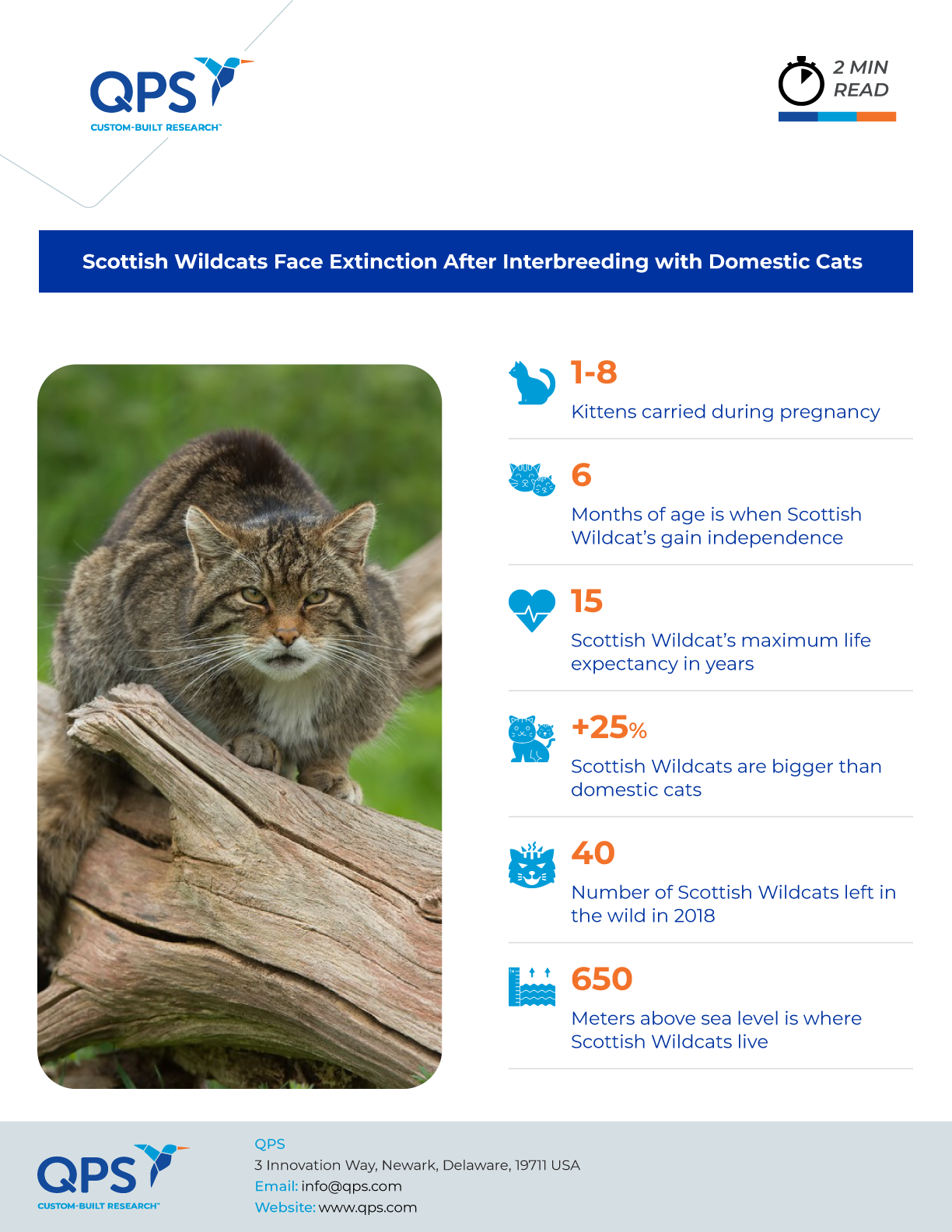In Scotland, the European wildcat, which is about 20% bigger than domestic cats, with denser fur and a thick, blunt tail, is a symbol of bravery and independence. For over 2,000 years, the wildcat lived and thrived in isolation, away from humans and domestic cats. Research now shows, however, that interbreeding with domestic cats over the last 70 years has pushed Scottish wildcats to the brink of genomic extinction. With a potential boost from genomic analysis, conservation efforts aim to reverse the situation. “We have animals with a mix of two sets of genes. Now we want to separate those sets and recreate Scotland’s original wildcat population,” said Dan Lawson, the lead genomics researcher on the project. “It won’t be easy, but the benefits will be considerable, not just for wildcats but for other endangered species that are being swamped, genetically, by similar animals.”
European Wildcats vs. Domestic Cats
Historical excavations at Kilton Castle in Northeast England unearthed a mix of remains from domestic cats and European wildcats dating back to the 14th century. Researchers reported that, despite their proximity, the two species rarely interbred, maintaining genetic separation for centuries.
While domestic cats and European wildcats share a common genus, Felis, their differences are notable. The larger and more solitary European wildcat maintained a considerable genetic distinction from domestic cats due to habitat preferences and mating behaviors.
Breaking Down the Barrier
Despite the historical separation, a shift occurred around 70 years ago, leading to unprecedented interbreeding between the wild and domesticated species. DNA analysis revealed a significant influx of domestic cat genetic markers into the Scottish wildcat population, particularly after 1997.
Various factors, including human encroachment, viral diseases affecting prey, and habitat loss, drove the Scottish wildcat population to the brink. With as few as 30 individuals remaining, the cats resorted to mating with domestic cats, causing their genetic makeup to change rapidly.
Genomic Extinction
Today, the once-pure genome of Scottish wildcats is described as “genomically extinct,” replaced by a chaotic mix of wild and domestic DNA. Striking patterns and colors not found in nature now characterize this hybridization. “Everything these wildcats have evolved over thousands of years is being lost in a few generations,” said Jo Howard-McCombe, lead author and a conservation geneticist at the Royal Zoological Society of Scotland.
Ironically, genes inherited from domestic cats, particularly those associated with disease resistance, may have prolonged the Scottish wildcat’s survival. However, these same genes were acquired through close contact with domestic cats, which accelerated the loss of the wildcats’ unique traits.
Conservation Efforts
Conservationists, led by the Saving Wildcats, are working to reintroduce wildcats raised in captivity into the wild. So far, they have released 19 cats from this population, which is primarily unaffected by interbreeding with domestic cats. The team chose a 600 km section of the Cairngorms National Park called Cairngorms Connect for the cats’ new habitat. Researchers monitor activity in the area with more than 100 cameras. When they detect the presence of any feral or domestic cats, they try to keep them out of the wildcats’ gene pool. The team also monitors the wildcats’ movements via GPS collars.
Scientists hope to boost the rewilding effort with genomic analysis of individual cats but note that the effort would take time and sustained funding. “It will take 10 to 20 generations of careful breeding and genetic analysis to recover the complete wildcat genome,” said Lawson. “That poses all sorts of problems, not least financial.” In the meantime, the recent reintroduction and monitoring project shows promise as a means to kickstart the recovery of the wildcat population.
Did you enjoy this blog post? Check out our other blog posts as well as related topics on our Webinar page.
QPS is a GLP- and GCP-compliant contract research organization (CRO) delivering the highest grade of discovery, preclinical and clinical drug research development services. Since 1995, it has grown from a tiny bioanalysis shop to a full-service CRO with 1,100+ employees in the U.S., Europe and Asia. Today, QPS offers expanded pharmaceutical contract R&D services with special expertise in neuropharmacology, DMPK, toxicology, bioanalysis, translational medicine and clinical development. An award-winning leader focused on bioanalytics and clinical trials, QPS is known for proven quality standards, technical expertise, a flexible approach to research, client satisfaction and turnkey laboratories and facilities. Through continual enhancements in capacities and resources, QPS stands tall in its commitment to delivering superior quality, skilled performance and trusted service to its valued customers. For more information, visit www.qps.com or email info@qps.com.








